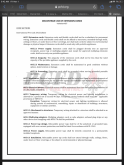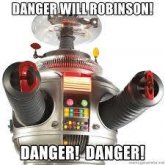I have been using what is shown in the pictures for 10 years. After spending time online watching people install expensive critical load panels and dangerous back-feed systems I wonder why more people don't take this approach?
View attachment 1120
View attachment 1121
For those interested in more details, read on. For others, I am basically just asking if it is code compliant to install a female plug and male plug in home wiring between the panel and the loads served by the wire (female plug goes to panel) as shown in the first picture. The reason to do this would be to allow the circuit (male plug) to plug directly into a generator or all-in-one solar system, bypassing the panel. The panel picture is just so you know what my US 200A 120V split phase panel looks like in case that helps.
More details...
If a generator (whether it be a gas powered generator or all-in-one solar/battery system) has a 15A or 20A circuit breaker built-in it seems to me this would be safe, but I am not a trained electrician. Installing plugs would not be as easy for panels in finished areas where wires are behind a wall, or for conduit protected wires, but for panels in unfinished areas like the one pictured (in an unfinished basement) this is a really inexpensive and easy way to get backup or alternative power to appliance circuits.
Pros
Easy to install the plugs in wires if they are not in walls or conduit.
I think it should be fire safe if the off grid supply (generator or solar system) has a breaker the same size or smaller than panel breaker serving that wire.
I think it should be electrician safe if the wires are labeled (on panel side and appliance side of wire).
I think it should be lineman safe because power from the generator completely bypasses the panel so it can not back-feed the grid(mains).
My favorite pro is that this allows other devices to be installed in the utility area where the panel is located instead of taking up space on outlets (things like Killawatt meter, iot smart switches, and RFprotect devices to protect refrigerator from brown outs).
Makes it easier to use all-in-one systems like the Yeti, Bluetti, and others in homes, especially if solar panels are used and the solar wires enter the home in the same area as the electric panel.
Makes it easier and cheaper to connect critical loads to a generator with breaker protected outlets during a power outage.
The male and female plugs are easy to find at most hardware stores, inexpensive, and there are several instruction videos online to show beginners how to safely select and install them.
Cons
May not be easy if wires are behind a finished wall or in solid conduit. If conduit is required, flex might be an option but would make install more difficult for beginners.
The installer must make sure the off grid energy source has a breaker appropriate for the wire.
Others? Is this not code compliant in most or all situations? Could it cause a failed home inspection?
The National Fire Protection Association (NFPA) has a web page that allows submitting questions about US national electric code compliance. This would probably be the most definitive way of answering this question, but only NFPA members or public officials can ask questions.
Adopted in all 50 states, the NEC is the benchmark for safe electrical design, installation, and inspection to protect people and property from electrical hazards.
www.nfpa.org
I may eventually look into joining the NFPA just to ask about this, but for now thought I would run it past the DIY Solar Forum to see what people think. Maybe someone on the forum is an NFPA member?
In the US there is a youth education program called 4-H that is associated with University Extension. 4-H offers youth electrical safety classes where electricians teach kids electrical safety with hands-on activities. One of the hands-on activities is to help the kids make extension cords using a wire, male and female plug ends, wire strippers, and a Phillips screwdriver. They teach the kids that small lamp cords should not be used for space heaters. They also teach them how to pay attention to cord size and device power use labels so they don't plug too many high draw appliances into one power strip. These classes are not available to all kids, and some kids forget what they learn (according to follow up surveys). I mention this to make the point that safely plugging in cords and understanding how to determine appliance usage is really the entry point of safely using electricity. If batteries continue to fall in price and all-in-one systems with breakers that match up with common home circuit sizes become more common this approach of using home wires as extension cords might help a lot of people safely and cheaply install solar even if they know only the basics of electrical safety and have a limited budget. I think it could possibly lead to quicker adoption of solar by making it more “plug and play”, but if it is not code compliant that will hold it back even if it can be done safely.





